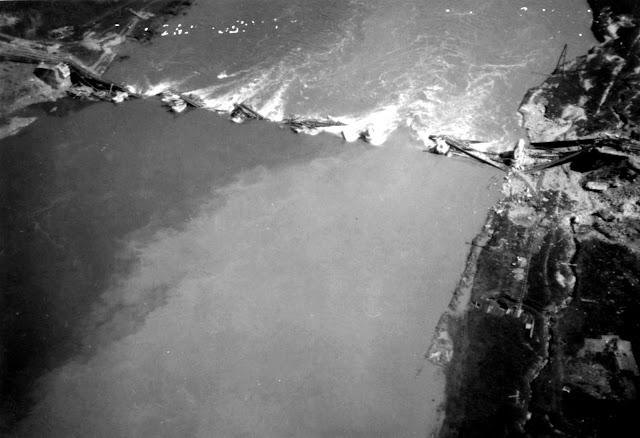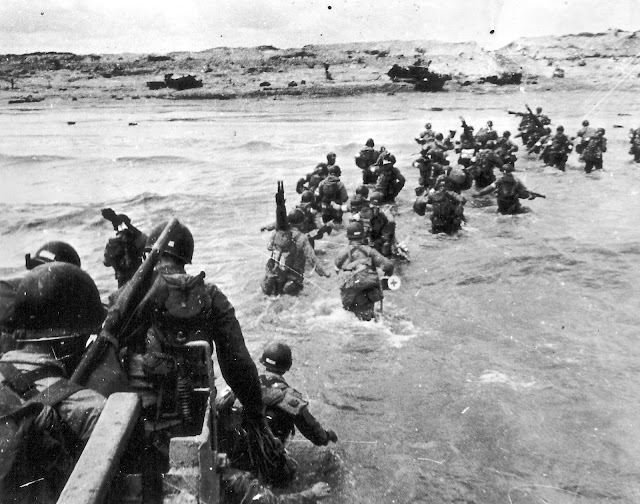2LT. ROBERT R. CHALOT JR., WWII: Son of French WWI pilot dies in dad's homeland
Robert Sr., who would have pronounced his Christian name Roe-bear, emigrated to the U.S. from war-ravaged France in 1920, settling in Jersey City, New Jersey. Wife Gabrielle and infant son John A. would follow in 1921.
At the time, Jersey City was a ferry-ride across the Hudson River to Manhattan. There were no bridges or tunnels connecting the two. The first, the Holland Tunnel, was still a year from completion when Robert Jr. was born on April 22, 1923.
Robert Sr. found work as a laborer at the General Motors factory in North Tarrytown (Sleepy Hollow today) and the family lived in a house on Tarrytown’s North Washington Street near Patriots Park.
Robert Sr. left the GM plant around 1935 to become an auto mechanic, moving the family to a house on Mountain Road in the hamlet of East Irvington, known then as Little Dublin for the many Irish immigrants living there.
There Robert Jr. would meet fellow Class of 1942 students Cuthbert Powell Sinkking and Arnold J. Meszaros, both of Main Street. Robert Jr. played varsity basketball and football at IHS with Meszaros. The pair went on to attend Susquehanna University in Selinsgrove, Pa., in the fall of 1942 where they both played on the freshman football team. The trio gave their lives on Jan. 1, Feb. 9 and March 3, 1945, respectively, while driving the Nazi army back towards Berlin and unconditional surrender.
Chalot and Meszaros are remembered in the Susquehanna University Class of 1946 yearbook which is dedicated to them.
Meszaros and Chalot enlisted in the Army in the late spring of 1943, Sinkking a year later. While Meszaros and Sinkking joined the infantry, there was no doubt Robert would find himself in a cockpit. Older brother John had been rejected when he volunteered to join the Army Air Corps for pilot training in early 1941 well before the U.S. entry into the war after Pearl Harbor on Dec. 7, 1941.. He didn’t have the college education background it required at the time.
Determined to fly and fight for his native France (which had surrendered to Germany on June 25, 1940), John went to Canada and volunteered with the Royal Canadian Air Force which trained him to fly fighter planes and sent him to Great Britain to fly alongside their Royal Air Force comrades.
Robert had a year of college behind him and was sent to the U.S. Army Air Forces Advanced Flying School at Freeman Field, Indiana, to train as a pilot. He got his wings upon graduation on Jan. 6, 1944, and took a brief furlough to Irvington before heading to Dodge City Army Field in Kansas in late January to learn to fly Martin B-26 Marauder bombers, a nine-week course at the training school of the Army Air Forces Training Command.
It might sound cliché, but while on leave, he became engaged to his Irvington High School sweetheart, Margaret Tewey of South Eckar Street. Margaret was working as a “cadet nurse,” a term given to student nurses at the time who’d replaced professional nurses who’d left stateside hospitals to tend to the wounded overseas.
While in Kansas, Robert learned on March 11, 1944 that his brother John was missing in action after his P-51 Mustang fighter had failed to return from a bomber-escort run over Munster, Germany. John had flown some 40 missions for the Allies before being transferred to the USAAF 8th Air Force on Sept. 1, 1943 and his final mission was his 18th for the U.S. Army Air Forces.
In December 1944, the International Red Cross informed the Chalot family that John had been captured and was being held by the Nazis in Luftwaffe prisoner of war camp Stalag Luft III in today’s Żagań, Poland. Stalag Luft III was the setting for the famous novel by former inmate Paul Brickhill and 1963 film based on that novel, The Great Escape, starring Steve McQueen.
It is unlikely that John Chalot was at the camp on March 24/25, 1944 when the "great" escape of 73 prisoners took place. (Only three of the escapees made it to England. The rest were recaptured and 50 of those 70 ordered shot by Nazi dictator Adolf Hitler.)
“... On January 1, 1945 our group is assigned to the Konz-Karthaus to bomb a railway bridge. Our planes lined up for the take off and two aircraft became airborne. The third plane, piloted by second Lieutenant Robert R. Chalot of the 497th bombardment squadron, after making its run at high speed down the runway, rose to join up with the preceding aircraft when apparently a loss of power in the engines when but 20 feet above the ground caused his airplane to crash to the left of the runway and burn.
“The plane loaded with 2 × 2000 pound general purpose bombs were in themselves a menace to human safety and that is added to the fierce fire that was beginning to consume the plane, made it a difficult task to approach the craft to rescue the injured crew members. Despite the known danger that existed the 2058th engineers (aviation), firefighters, with 1st Lieutenant Alton B. Parker, in command and eight of his men approached the flaming craft to extinguish the fire and rescue those trapped within and those who had managed to extricate themselves from the twisted plane but who fell near it because of their injuries.
“14 minutes after the crash, the bombs the plane carried exploded with terrific force, scattering plane, fire and bomb fragments over a wide area. Lieutenant Parker, and three of his enlisted man, Sergeant Elmer E. Juliy, Corporal William G. Reiker and T/5 Leonard S. Luezkowski were instantly killed by the detonation and five others of his team seriously injured. …
“Of the crew members in Lieutenant Chalot’s plane, 2nd Lieutenant Elliot W. Falk, co-pilot, lost his life. S/Sgt. Bronislas Krowiak, Sergeant Frank W. Dunaway, Sergeant Garth E. Morse and Sergeant William R. Fowler were all seriously injured. Due to the danger to the other planes and personnel while the crashed ship burned, the mission was scrubbed by Wing Headquarters.”
Sergeants Krowiak and Fowler succumbed to their injuries later, bringing the death toll to four of the six-man crew.
EPILOGUE: Second Lt. John Chalot and Stalag Luft III were liberated by advancing Soviet Red Army forces in January 1945. It is unclear when his grieving parents, who learned of Robert’s fate only on Jan. 16, were informed he’d been freed. It may not have been until after the unconditional surrender of Germany on May 8, 1945. He didn’t return to Irvington until June.
He married his childhood sweetheart, Kathryn Fabian Flynn of Taxter Road, also in East Irvington, at Immaculate Conception Catholic Church on July 21, 1945, the same church where his late brother was remembered in a memorial Mass in March earlier. Robert was never able to return home to marry his fiancée, Margaret Tewey.
Robert’s remains were returned to the U.S. in 1949 and lay in repose at Edwards Funeral Home in Dobbs Ferry on May 18, 1949.
His life was celebrated at a Mass of Requiem at Immaculate Conception on May 19 and he was interred with military honors at Sleepy Hollow Cemetery.
Links to similar personal stories about Irvington heroes who gave their lives for their country*
◼ Pfc. Cuthbert Powell Sinkking: Class of '42 gave 3 of its own to the ages
◼ Pfc. John Joseph (Joe) Gilchrist: Died after capture of Saint-Lo
◼ Lt. (j.g.) George Eddison Haines: Lost at sea, awarded Silver Star
◼ Pfc. Joseph Thomas Costello: Teen lost life in Battle of Mindanao
◼ MSgt. James Peter Kelley: Survived WW II and Korea; died in fall
◼ S1 Archibald Ronald: Lost on next-to-last Navy ship sunk by U-boat
◼ TSgt. Raffaele R. (Ralph) Reale: A hero's life ended on East Sunnyside Lane
◼ Sgt. Robert F. Morrison: Took fight to the enemy, fell in Alsace
◼ Lt. Col. George W. Beavers Jr.: Re-upped as private; died on war's eve
◼ F2 Claude L. Bronnes: Went down with the Atlanta at Guadalcanal
◼ MMLC William James Downey: Died aboard ship off West Coast
◼ Pvt. Alick Main Ian: Died taking Aachen, first German city to fall in WWII
◼ Pfc. George Mills Hill Jr.: Survived Okinawa, only to fall in South Korea
◼ Pvt. Peter R. Robinson: Lost to shadows of time over Pacific, answers never found
WORLD WAR I













Comments
Post a Comment